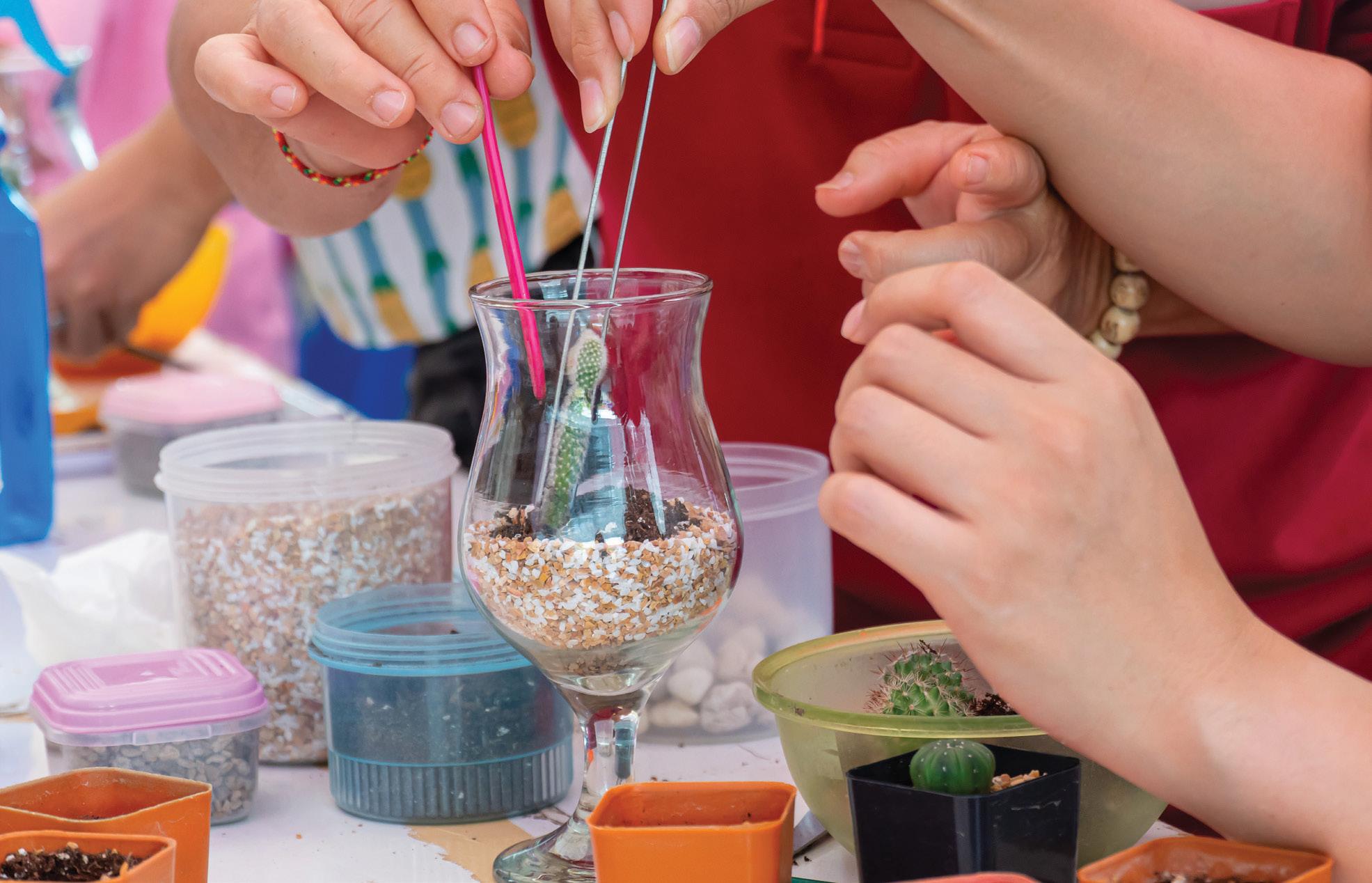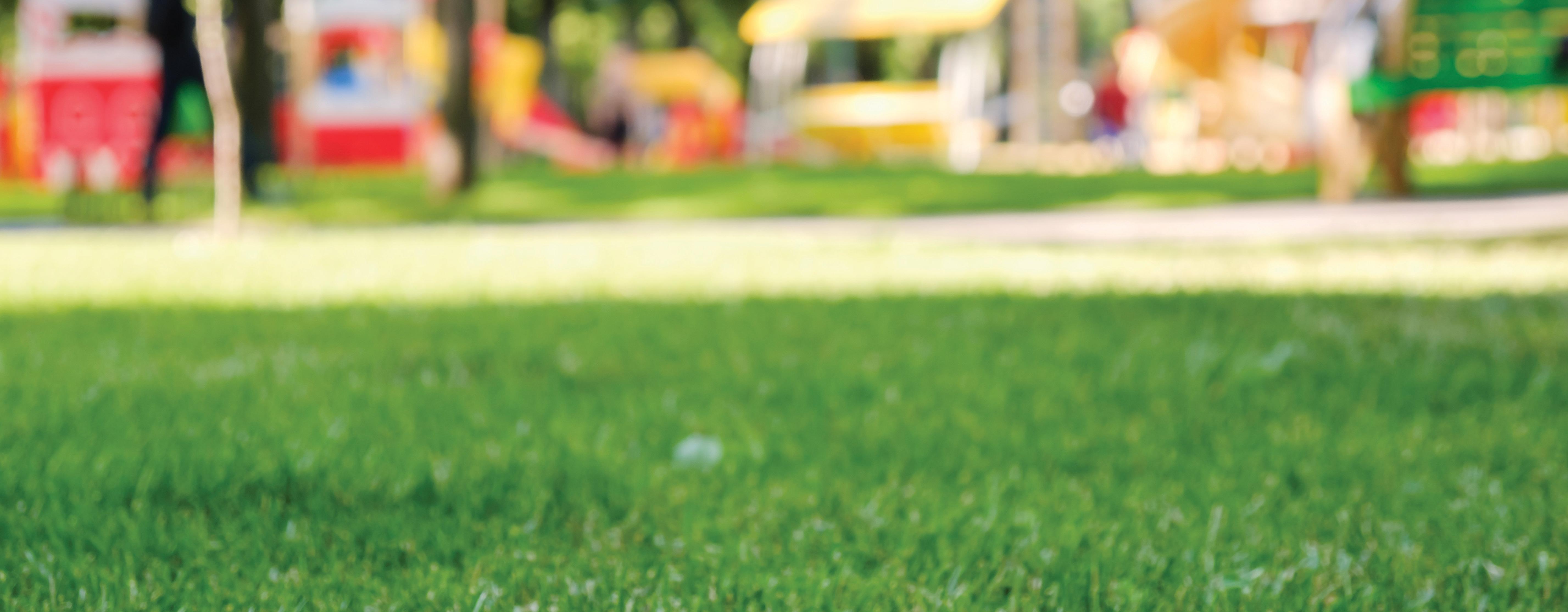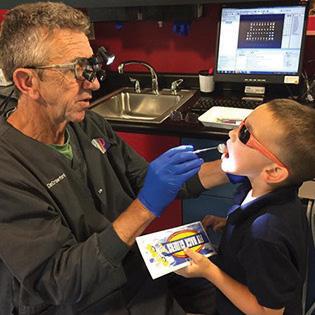
6 minute read
Kids Crafts
Family Fun Summer

Advertisement
#1
Squirt Gun Painting
Summer has started, school is out, and entertaining our kids while they’re home 24/7 can be challenging for even the most studious parent. Make some new favorite memories this summer with any of these family-fun summer crafts! #1: If your kids aren’t fond of painting outside, change their tools to give them a fun new method of painting!
With a couple of medium-sized white canvases for target practice, all you’ll need next is some tempura paint, diluted with a little water, and a couple of squirt guns to get the fun started.
Pro-tip:
We find that placing a few drops of tempura paint into clear squeeze bottles and diluting it with a little water can help dispense the paint into the smaller openings of the squirt guns.
DIY Crafts
WRITTEN BY VICTORIA ARNOLD


#2
Tie-Dye Towel
#2: Beach trip coming up? Let your kiddos use their own towels to both dry off and show off!
For this craft, it’s best to use 100% white cotton towels, tie-dye paint of your choice (we find that Tulip One-Step Tie-Dye works well, and it is available at any Walmart location).
Next, choose your rubber-band method (spiral, bull’s eye, heart shape, etc.). After tying up your towel and applying the dye, make sure to keep the towel secured in a garbage bag to lock in the moisture and store overnight.
Pro-tip:
If your kids want a little more personalization, you can also purchase spray-on tie-dyes and let your kids write their name in duct tape on the towel before spraying it with paint!


#3
Backyard Terrarium
#3: If you’re looking for a more educational craft and need to put those leftover mason jars to good use, teach your kids about the ecosystem that’s right in their backyard with their own terrarium!
Start with any large glass container with a lid, and fill the bottom about 2-3 inches with layers of rocks. After this, add about half an inch of horticultural charcoal to support filtration, place some moss on top, and then add a few small plants collected from the backyard. After spraying a few pumps of water with a spray bottle, place your terrarium in an area with bright yet indirect sunlight, and only open the lid to release excess moisture. Once complete, your tiny ecosystem is good to grow!
Pro-tip:
If your jar is a little tight to squeeze your hand through, try using a larger, longer set of tweezers instead to help you easily arrange smaller objects in the terrarium!


#4
Kid-Made Bird Feeders
#4: Got an empty leftover toilet paper or paper towel roll? Don’t throw it out! Make a simple, disposable bird feeder so you and your kids can properly welcome all of your backyard bird friends.
First, punch four holes on the bottom of each side of your cardboard roll. Collect two sturdy, thick sticks from the backyard to place perpendicularly into the holes, allowing the birds a place to stand while eating. Afterwards, simply puncture two holes at the top of the roll, grab some leftover string or yarn, and tie it through the holes to create a handle to hand the feeder in a nearby bush or tree.
Next, slather the sides of the roll with smooth peanut butter, and simply sprinkle a handful of bird seed over the peanut butter, and voila!
With COVID still lingering, these fun activities can provide a safe and entertaining way to occupy your family members when you feel a little too cramped to stay indoors. So break out the art supplies, and have some creative fun in the sun!
Why choose a Pediatric Dentist?
Achild’s first visit to the dentist should be enjoyable. Children are not born with a natural fear of the dentist, but they can fear the unknown. Our office makes a special effort to use pleasant, non-frightening, simple words to describe each treatment. We want you and your child to feel at ease from the moment your family arrives at our office.
The more you and your child know about the first visit, the better you will feel.

The American Academy of Pediatric Dentistry recommends...
Children should visit the dentist by their first birthday. It is important that your child’s newly-erupted teeth (erupting at six and 12 months of age) receive proper dental care and benefit from proper oral hygiene habits right from the beginning.
When New Teeth Arrive
Your child’s first primary or baby teeth will begin to erupt between the ages of six and 12 months, and will continue to erupt until about age three. During this time, your child’s gums may feel tender and sore. To help alleviate this discomfort, we recommend that you soothe the gums by rubbing a clean finger or a cool, wet cloth across them. You may also choose to make use of a teething ring. When your child has finished teething, you can expect a total of 20 primary teeth.
Your child’s primary teeth are shed at various times throughout childhood. Permanent teeth begin erupting at age six, and continue until age 21. Adults have 28 permanent teeth (32, including wisdom teeth).
Adopting Healthy Oral Hygiene Habits
As your child’s teeth erupt, be sure to examine them every two weeks, looking for lines and discoloration that may be caused by decay. Remember that sugary foods and liquids can attack a new tooth, so take care that your child brushes after feeding or eating. We recommend brushing two times a day for optimal oral hygiene: after breakfast, after lunch, after dinner, and at bedtime.
Brushing can be fun, and your child should brush as soon as the first tooth arrives. Fluoridated toothpaste is recommended for all children starting at tooth eruption, regardless of caries risk. A smear (the size of a grain of rice) of toothpaste should be used up to age three. After the third birthday, a pea-sized amount may be used. We recommend dispensing toothpaste for young children and supervising and assist with brushing.
Flossing is also a part of good oral hygiene habits, and your doctor will discuss with you the right time to start flossing. If you notice signs of decay, contact your dentist immediately.
Preventing Tooth Decay with Regular Checkups
Tooth decay is caused by sugars left in your mouth that turn into an acid, which can break down your teeth. Children are at high risk for tooth decay for a simple reason: many children and adolescents do not practice regular, good oral hygiene habits. Proper brushing and flossing routines combined with regular dental visits help keep tooth decay away.
Your child should visit the dentist every six months for regular dental cleanings and checkups. We recommend fluoride treatments twice a year along with cleanings to keep teeth their strongest. Tooth sealants are also recommended because they “seal” the deep grooves in your child’s teeth, preventing decay from forming in these hard-to-reach areas. Sealants last for several years, but will be monitored at your child's regular checkups.










